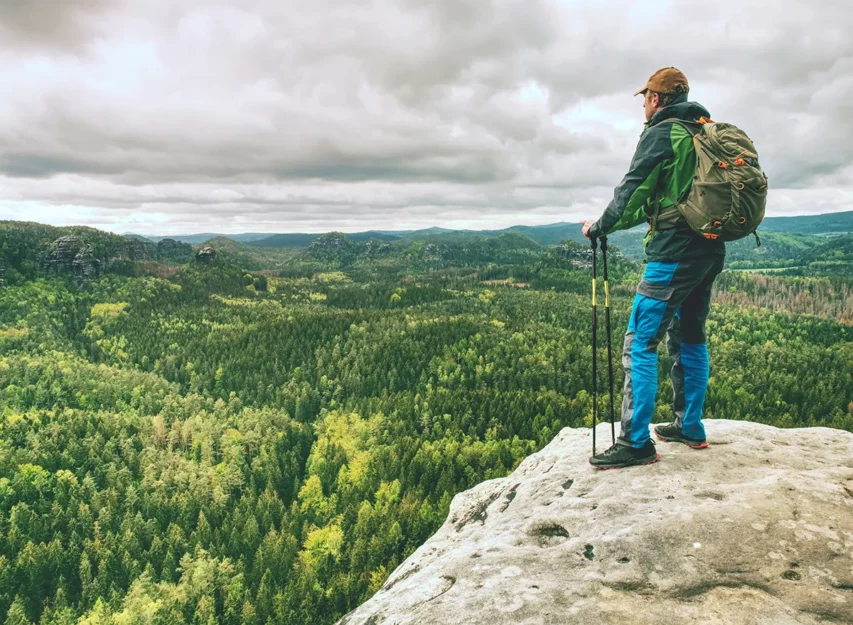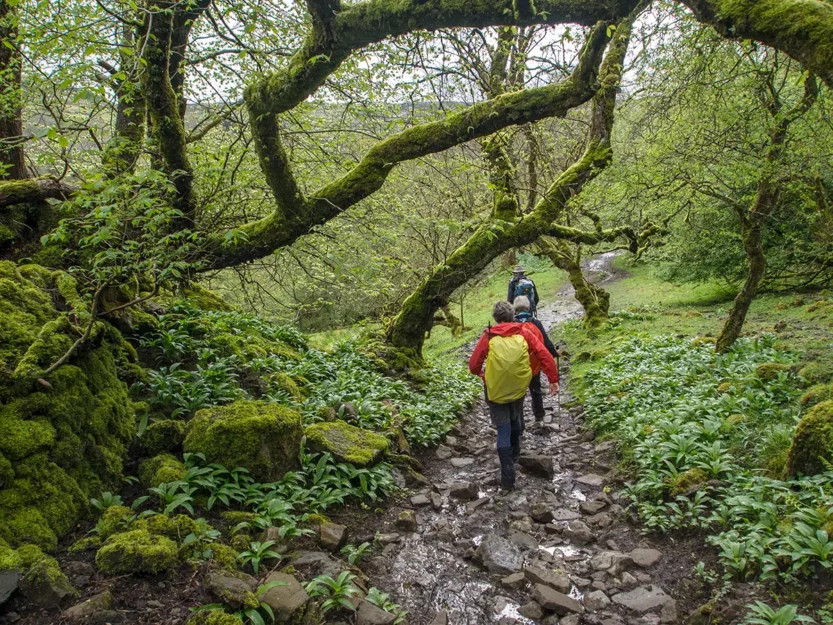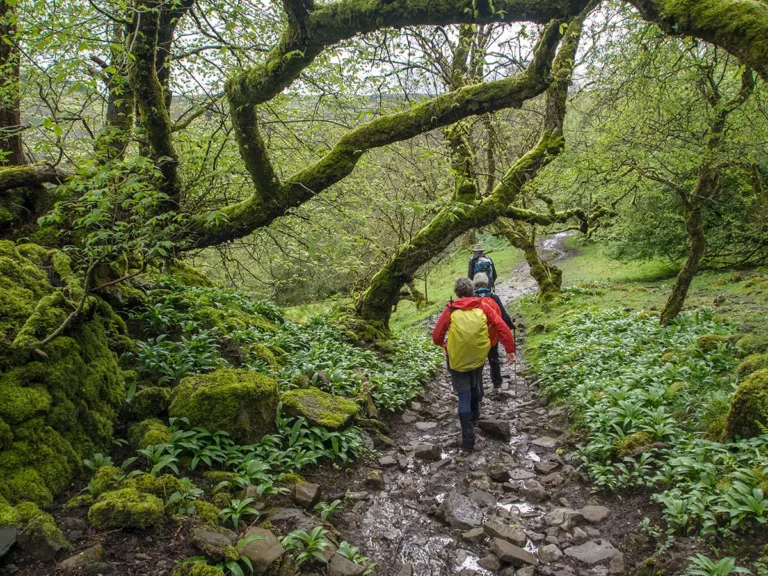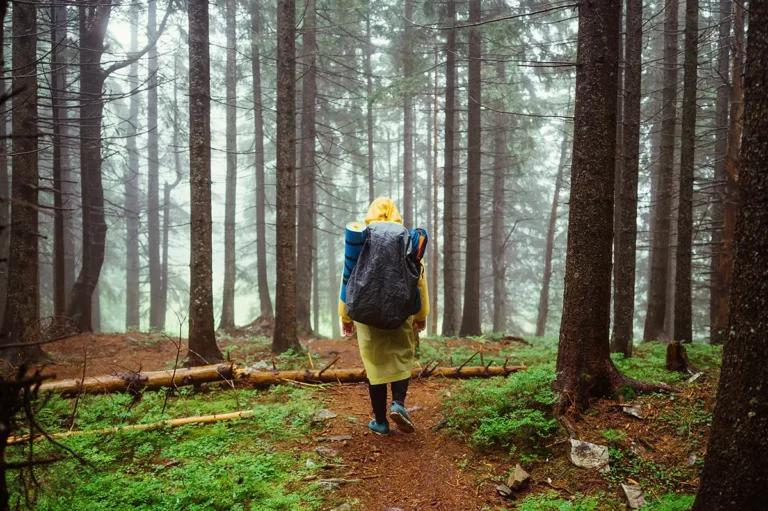Most believe Las Vegas is always hot. But living in a valley, our winters drop below freezing, and we see snow in higher elevations. However, my winters at home did not prepare me for hiking in the cold winters of Montana.
While many turn to skiing during the winter, hiking can be a year-round hobby. Knowing what to wear on a cold hike, and adding the proper winter hiking layers, is the key to an enjoyable, safe hike.
Layering got this desert hiker through a freezing hike in Montana, and it will do the same for you.

Winter hiking
Hiking in cold weather is tricky. Dress too warm, and you sweat heavily, risking chilling your body temperature through rapid evaporation. Dress too light, and you risk hypothermia.
Finding the proper balance of winter hiking layers means breathable, moisture-wicking synthetic fabrics wrapped by naturally insulating layers.
It also means avoiding cotton.
Cotton kills
“He was wearing all cotton, which is the worst fabric for cold, wet weather.” Alaska State Trooper Michael Potter said after discovering a hiker succumbed to hypothermia. It was 40 degrees and raining.
Cotton kills is a popular phrase amongst hikers, National Park Rangers, and the Boy and Girl Scouts of America. It’s a scary reminder that cold weather hiking in cotton can lead to hypothermia and death.
Cotton is absorbent, takes forever to dry, and works to cool the body in all temperatures. Even when protected from the elements, sweating in a cotton base layer will absorb and actively cool your body.
In the heat or the snow, don’t wear cotton. And that includes hiking in cotton denim jeans.
How to layer for winter hiking
When you live in a cold area, layering is familiar. But choosing what to wear hiking in cold weather involves much more planning.
Since you’ll inevitably warm up during your hike as you exert energy, building your winter hiking base layers means keeping in mind shedding those layers too.
Be sure each piece of your hiking outfit can easily be adjusted, removed, and stored during your hike.

Layer 1: Baselayer
A base layer should hug the body but not be too tight. The purpose of a baselayer is to wick sweat away from the body, preventing the sweat from evaporating and rapidly cooling your core temperature.
For your base layer, choose a moisture-wicking, long sleeve shirt. It doesn’t need to be too heavy or thick since your following layers are your insulating layers.
What is moisture-wicking? Moisture-wicking fabrics pull moisture from the skin to the exterior layer of the fabric. They also dry quickly.
Synthetic moisture-wicking fibers are:
- Polyester
- Nylon
- Spandex
- Gore-Tex
- Polypropylene
Natural moisture-wicking fibers include:
- Wool
- Bamboo

Layer 2: Mid-layer
Consider your mid-layer as the first insulating layer, but being warm isn’t its only job. A mid-layer also needs to be quick-drying and moisture-wicking. After all, what good is your base layer if it transfers sweat to an absorbent mid-layer?
Polyester fleece is an excellent mid-layer that offers the flexibility of a lightweight, midweight, and heavyweight option. Fleece is fast drying and keeps you warm even when damp, but it does have a downside. Since fleece is breathable, protection from the cold wind is vital with an outer shell layer.
Additional popular choices for mid-layers are down, synthetic down (puffy jackets), and merino wool.

Layer 3: Outer shell layer
The outer shell layer protects you from wet and windy conditions. If the weather turns and a storm rolls in, the shell layer ensures your base and mid-layers stay dry, keeping you warm and safe.
Outer shell layers range in protection levels, offering waterproof or water-resistant combinations and breathable or nonbreathable. Gore-tex is a popular material that allows breathability and waterproof protection.
When purchasing an outer shell jacket, buy a size large enough to fit over your layers. Opting for bright colors ensures you are identifiable in a snowstorm.

Layer 4: Protect your head, fingers, and toes
We were lied to growing up. You don’t lose 50 percent of your body heat from your head. But, any bare skin will allow heat to escape, and protecting your head, hands, and feet is essential to your warmth and comfort.
Wear a beanie
Unless you have a source for a fur Russian ushanka hat, nothing beats a beanie on a cold day. A warm beanie traps heat while preventing freezing ears. They are inexpensive and invaluable for hiking in the cold.
Removing a beanie for a few minutes can cool your temperature, preventing you from wrestling your shell layer off when you start to heat up.
Merino wool hiking socks are a must own
It would be a shame to go through so much trouble finding the perfect winter hiking layers just for your cotton socks to be wet and freezing.
Wool hiking socks provide padding, insulation, and natural moisture-wicking properties. Wool hiking socks are perfect year-round and considered essential hiking gear.
Cheap gloves often do the trick
Your choice of gloves depends on the climate. When no rain or snow is forecasted, I often opt for the $1.99 corner store gloves. But I also keep waterproof gloves in my backpack when any likelihood of wet conditions is possible.
Winter hiking tips
There’s no question that hiking in the winter involves much more planning and safety than hiking on a sunny 70-degree day.
To help, here are some cold weather hiking tips to ensure you have an enjoyable adventure:
- Bring plenty of water and snacks.
- Pack your backpack with the essential items readily available.
- When resting, huddle together to share warmth.
- Never hike alone.
- Bring an emergency bivy (survival sleeping bag).
- Don’t layer too tightly where you lose mobility.
- Always tell someone where you’re hiking and when you plan to return.
- Stagger the zippers on your layers to avoid uncomfortable stacking.
- Wear polarized sunglasses in the snow to protect your eyes.
Final thoughts
The beautiful scenery of a hike is ever-changing with the seasons, and now that you know what to wear hiking in the cold, you can enjoy popular trails with less traffic.
During the summer, it’s ok to go cheap on hot weather hiking gear, but I strongly recommend investing in quality winter hiking layers.
Extreme weather is a significant risk for hikers. Taking a few easy precautions can dramatically reduce the chances of hypothermia, allowing you to relax and enjoy the trail.
Did this article help you understand winter hiking layers? If so, share it on social media or send it to your hiking partner.








